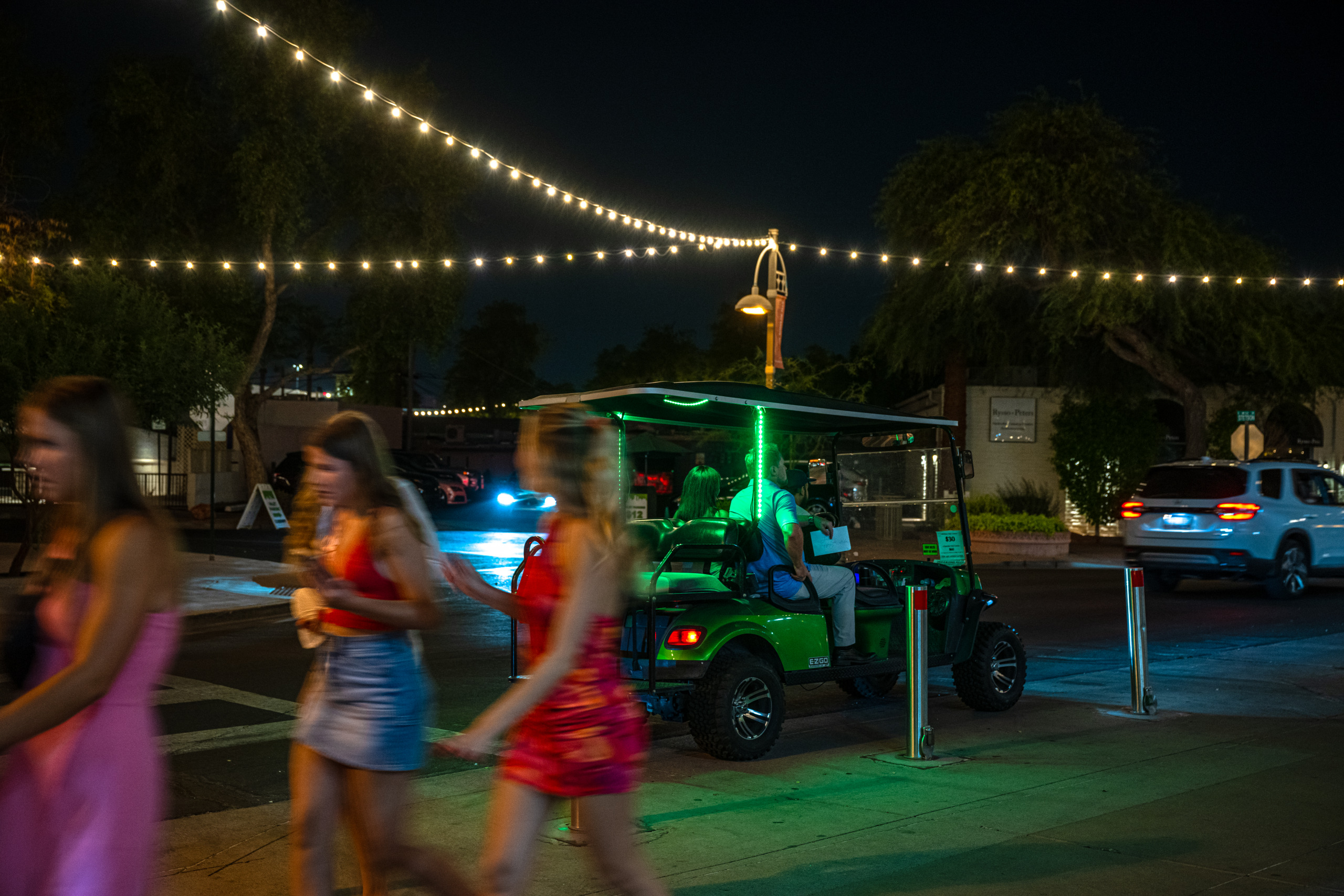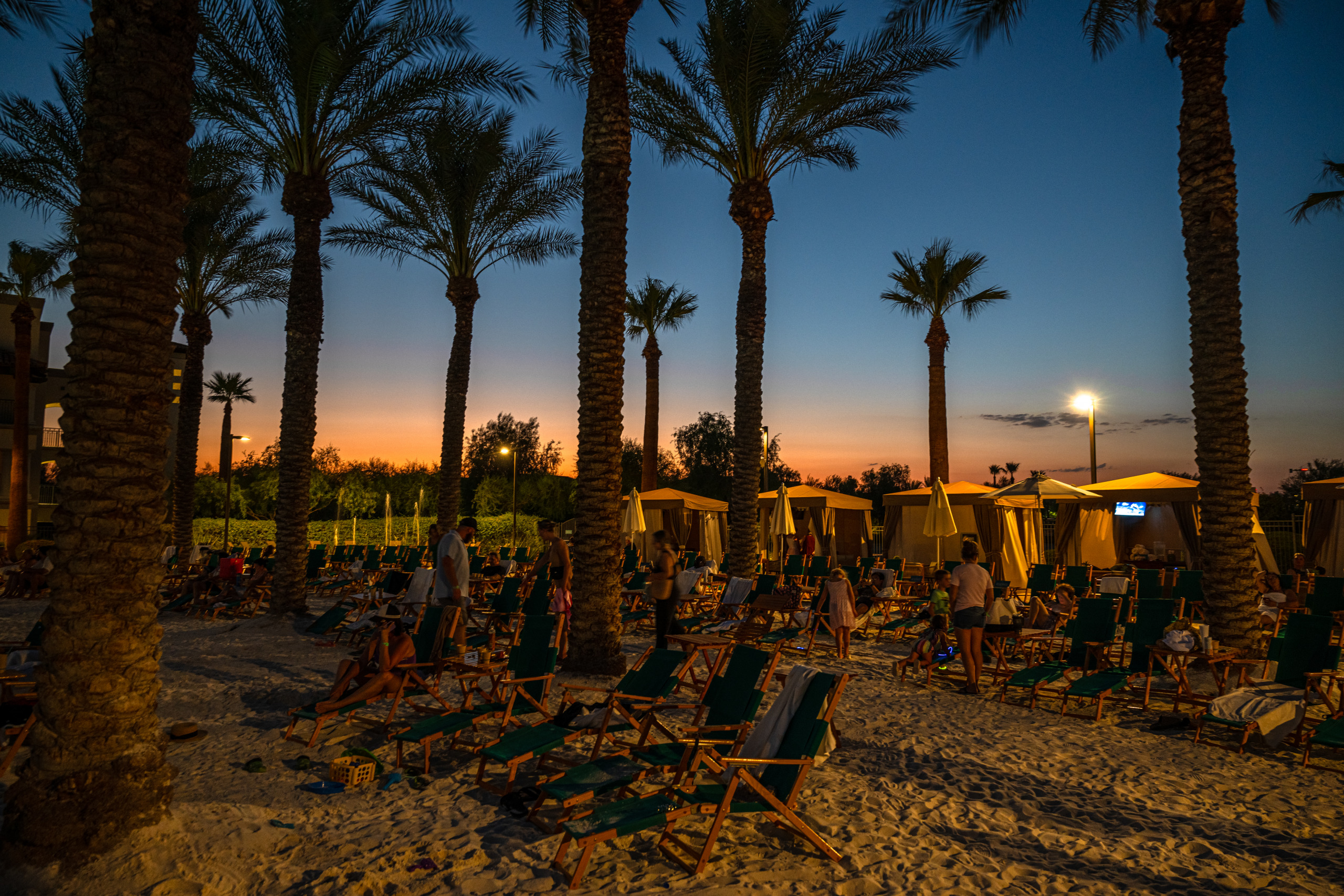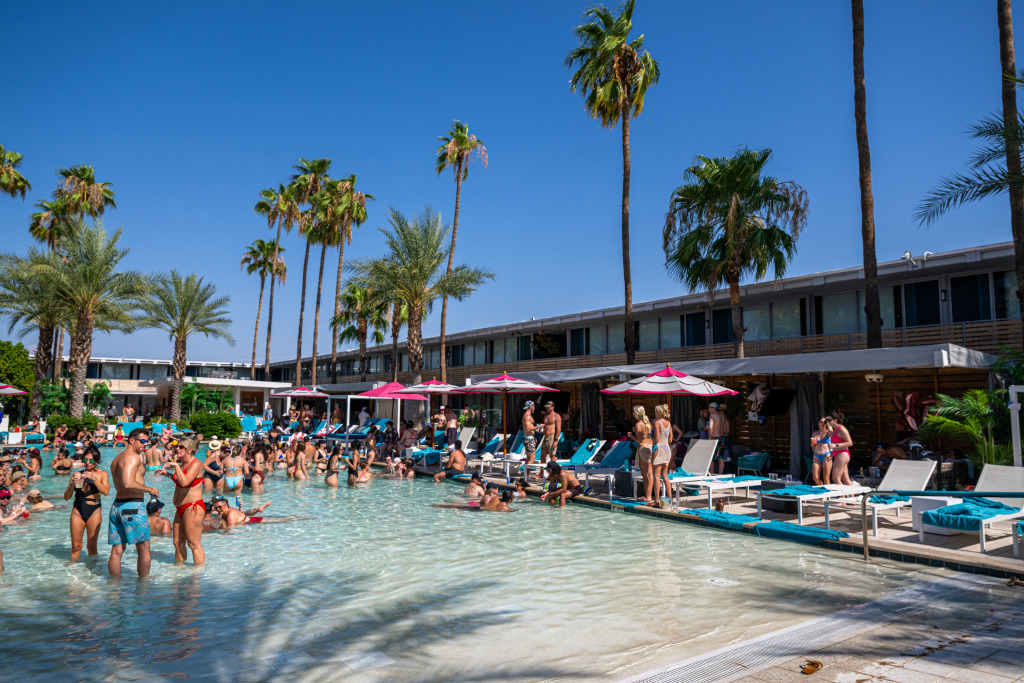Subscriber Benefit
As a subscriber you can listen to articles at work, in the car, or while you work out. Subscribe NowSCOTTSDALE, Arizona — For most of the year, it’s not hard to attract visitors to this city known for its spa resorts, golf courses and astonishing Sonoran beauty. But when summer hits, the heat is enduring and oppressive.
Travelers saw a problem, but some in Scottsdale sensed an opportunity: If you can’t beat the heat, why not sell it?
The triple-digit temperatures? True. But not sticky or sweat-inducing, marketers claim in an ad campaign called, “It’s that hot!” that launched nationally this year. The unrelenting heat? “Elegant,” they assured. “Like a sage-scented sauna.” And for those bold enough to seek out summer in Scottsdale, there are unbeatable rates at hotels and resorts that have innovated their offerings to accommodate blistering temperatures.
A warming planet is upending summer travel rituals—and the ways regions try to draw visitors. Sweden advertises “coolcations” as southern Europe bakes. Adventure travelers increasingly seek out destinations as if it is their “last chance” to see natural wonders. Europeans visit Dubai for air conditioning and indoor skiing.
Scottsdale is leaning in to the very thing that might deter summer vacationers, while adapting events to high temperatures. Hotels offer scheduled activities centered on heat relief, including nighttime mini golf, cabana misters and poolside movies. The campaign’s national success remains to be seen, but some heat and tourism experts worry there are dangers to romanticizing heat when advertising a travel destination.
Some hotels reported an increase in the number of guests from the East Coast and Pacific Northwest—places that have experienced unusually scorching summer temperatures—over the last two years. Vacationers said they came for the pool parties, good prices and cuisine, but they were also leaving behind extremes, like wildfires, humidity and weak air conditioning.
“It’s really smoky in Calgary,” said Hanna Haugjord, who was stretched out on a turquoise pool chair as a DJ played Dua Lipa. She and her best friend, Karenna Miller, left the Canadian city for a long weekend at the Hotel Valley Ho, a mid-century modern resort in the center of the city. It was the first hotel in Scottsdale to have central air conditioning.
The smoke didn’t push the duo to book a flight—they love the heat and the pools here—but it was nice to have a break from it. Miller said she was riding her bike last month and could feel it seeping into her lungs.
The hotel has seen an increase in summer out-of-state visitors in recent years, said Kristin Heggli, the director of marketing and communications.
“They’re just experiencing heat wherever they go,” she said. “We are more equipped for it.”
Heggli was getting out of the city for the last week in July.
“I’m headed to Seattle,” she said. “It’s supposed to be beautiful. In the 70s!”
Poolside at the hotel, cabana misters breathed a constant stream of wet, cool air. But at midday, the pool itself had already warmed to a bathtub-like temperature.
A few chairs down, D.C.-based immigration attorney Yalda Hajavi was not looking forward to flying back to humidity the next day.
“It’s dry heat,” she said, running a hand through her dark curls. “My hair is longer here.”
From 5 to 10 p.m., the Fairmont Scottsdale Princess, a sprawling resort in the city’s north, kicks off summer camp, with potato sack races, cornhole and mini golf.
Fans attached to strollers whirred on sleeping babies. Misters clouded young children toting tiny putters. One dad carried a caddy of brightly colored water bottles for his family. As a rose-gold sunset spread across the sky, twinkle lights popped on.

Ron Landavazo was thrilled to see the activities offered in the early morning and evening. He and his family had spent the hottest parts of the day at the mall before coming out to test the camp games with his 5-year-old son, Dexter.
The family from Albuquerque has taken the heat seriously ever since their other son, Dominic, vomited from heat exhaustion at a mini golf course in Scottsdale about five years ago. Now they take extra precautions, including staying inside when they need to and wearing cold towels around their necks.
“We are more careful,” he said. “Even at midnight here, it’s still hot.”
It was almost 8 p.m. A young girl in denim shorts and a T-shirt ran in front of a misting fan and yelled, “This feels so good!”
Experts worry, however, that the tourism campaign glosses over the real perils of heat, which the United Nations has called the deadliest form of extreme weather.
“I think it’s dangerous,” Jennifer Marlon, a research scientist at the Yale Program on Climate Change Communication, said of the ads. “I immediately started worrying about people who were flying in from other climate conditions who are not adapted physiologically to extreme heat.”
Maricopa County, which includes Scottsdale, Phoenix and Tempe, conducts some of the most detailed heat-death tracking in the country. The county has recorded 37 heat deaths this year. None of them are in Scottsdale. The city, a more upscale Phoenix suburb, said it has prioritized green spaces, shade and air conditioning to offer safety. Of 645 heat-related deaths recorded last year, 25 were in Scottsdale, according to Maricopa County.
There are daily reminders of the dangers heat can pose. On the last Friday in July, a family of 13 from out of town had to be rescued around 10:30 a.m. from Scottsdale’s McDowell Sonoran Preserve, said Dave Folio, public information officer for the Scottsdale Fire Department. One child was evacuated by a helicopter for heat illness, he said. The department does one or two rescues every day in the summer, Folio said, and 70 or 80 percent of them are heat related.
“The biggest misunderstanding people have of heat is they underestimate it,” said Scott Hamilton, the preserve’s manager.
That’s a challenge Marlon often faces. “There’s a cultural dismissiveness toward heat,” she said, noting there are risks in traveling to Scottsdale in the summer even if you stay inside or by the pool. “What if there’s a power outage? What if there’s a particularly severe heat wave?”

Experience Scottsdale, the nonprofit behind the campaign, is contracted by the city for tourism marketing. Officials there said they make safety awareness a top priority.
“No other time throughout the year is our marketing leading with the fact that there are dangers,” said Stephanie Pressler, the organization’s director of community and government affairs. “We try really hard to be as open and honest about it.” She added that in the summers it emphasizes indoor activities like museums and shops and doesn’t advertise some of the city’s most popular draws: hiking, ATV riding and horseback riding.
“The messaging is direct, honest but also humorous,” said Robert J. Kwortnik, a professor at Cornell’s Peter and Stephanie Nolan School of Hotel Administration. “If I were to make one recommendation for the campaign, and the website in particular,” he added, “it’s to also not shy away from the risks of extended exposure to hot ambient temperatures.”
Heat in the area is only intensifying. There have been at least 38 days reaching 110 degrees or more this year – a record, according to official weather observations in neighboring Phoenix. And Arizona is warming faster than most of the country, according to Climate Central, a nonprofit organization that tracks rising temperatures.
But those temperatures were far from the minds of revelers at the Hotel Adeline’s Saturday afternoon pool party. More than 300 people attend the event each week that it’s held in the summer, said John Godfrey, the hotel’s director of food and beverage. House music blasted. Misters in cabanas seemed to pulse in time with bass drops.
Gustavo Sanches traveled here from Bellingham, Wash. He said the heat didn’t bother him as long as a pool was nearby and the air conditioning was pumping. At home, summers are getting hotter, he said. Last year, for the first time, he installed an air conditioning unit in his fourth-floor apartment.
“The AC here is so nice,” said Sanches’s friend, Brandon Peters, who moved from Bellingham to Scottsdale. “In Washington a lot of people don’t have good AC.”
The two friends clinked their pink and yellow beverages before taking hearty gulps. An untouched bucket of plastic water bottles sat sweating on the table, as did four empty drink pitchers.
As night fell over the Fairmont, families flocked to the pool. The resort all but exhaled in relief, even as temperatures stayed above 90 degrees. On Saturdays the hotel airs “dive-in” movies. Kids on blow-up floats splashed and squealed as the pool glowed turquoise against the night sky. Adults sipped on iced drinks and lounged in green pool chairs.
The screen darkened, the movie began. Children cheered as the Disney logo faded out to show vast landscapes of ice and snow. That night’s feature? “Frozen.”
“All we’re missing is Popsicles,” said Lauren Burke, a preschool teacher from Scottsdale whose 8-year-old daughter Morgan splashed and watched the film. “That’d be good.”
Please enable JavaScript to view this content.

